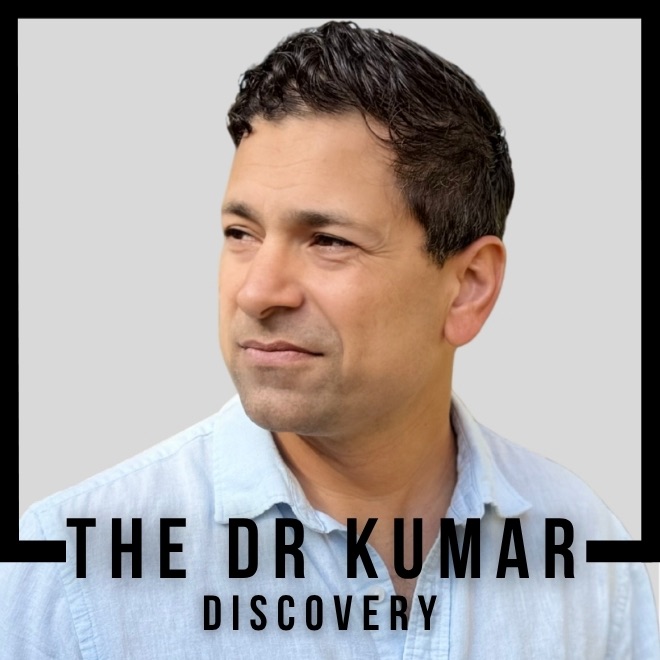Dr. Kumar’s Take:
Many people are prescribed statins to lower cholesterol and reduce the risk of heart attacks and strokes. But do these drugs actually help those who have a low risk of heart disease? A recent review challenges the routine use of statins in low-risk patients, revealing minimal benefits but significant side effects like muscle pain and increased diabetes risk.
Actionable Takeaway:
If your doctor suggests statins but your 10-year heart disease risk is under 20%, ask about lifestyle changes first. A Mediterranean diet, exercise, and avoiding smoking may provide similar or better protection without the side effects.
Brief Summary:
This review analyzed multiple large studies, including data from over 130,000 patients. It examined the impact of statins on individuals without pre-existing heart disease, focusing on both benefits and harms.
Findings:
✔ No significant reduction in overall mortality (statins did not help people live longer).
✔ 1 in 217 patients avoided a nonfatal heart attack.
✔ 1 in 313 avoided a nonfatal stroke.
✔ 1 in 21 developed muscle pain or damage.
✔ 1 in 204 developed diabetes.
The study questions whether the small chance of preventing a heart attack or stroke outweighs the higher risk of side effects, especially in low-risk individuals.
Study Design:
This was a meta-analysis (a study that combines results from multiple trials). It included:
- 22 randomized controlled trials with over 130,000 patients.
- Patients were 50-70 years old and had some cholesterol elevation but no history of heart disease.
- Measured death rates, heart attacks, strokes, muscle pain, and new-onset diabetes.
Results:
✔ No reduction in overall serious illness (NNT = 250 for mortality, meaning 250 people needed to take statins for one to benefit).
✔ Nonfatal heart attacks were reduced, but only slightly (NNT = 217).
✔ Nonfatal strokes were also reduced, but the effect was even smaller (NNT = 313).
✔ Muscle symptoms (pain, weakness, or damage) were common (NNH = 21).
✔ Diabetes risk increased slightly (NNH = 204 over five years).
The Controversy Around Statins in Low-Risk Patients
Statins clearly benefit high-risk patients (those with a 10-year heart disease risk over 20%), but their role in low-risk individuals is unclear.
🔹 Most studies were funded by pharmaceutical companies, raising concerns about bias.
🔹 “Run-out phases” were used—meaning patients who didn’t tolerate statins were removed before the study began, underestimating side effects.
🔹 Raw data is not available for independent review, making the true risks and benefits uncertain.
🔹 Some studies included higher-risk patients, making it hard to determine if statins help only high-risk individuals or everyone.
What You Should Do Instead
If your risk of heart disease is low, focusing on lifestyle changes is a better first step than taking statins.
✅ Eat a Mediterranean diet (rich in healthy fats, vegetables, and lean proteins).
✅ Exercise regularly (even brisk walking can help).
✅ Quit smoking (if applicable).
✅ Manage blood pressure and stress.
For those at higher risk (e.g., history of heart disease, very high cholesterol, or multiple risk factors), statins may be beneficial. But for low-risk individuals, this study suggests they may not be worth it.
Calculating Your Risk
Doctors use 10-year cardiovascular risk calculators to estimate your chances of having a heart attack or stroke within the next decade. The most common tool is the ASCVD Risk Calculator, which considers:
✔ Age & Gender – Older age and male gender increase risk.
✔ Cholesterol Levels – Higher total cholesterol raises risk; high HDL (good cholesterol) lowers it.
✔ Blood Pressure – High systolic blood pressure or use of medication increases risk.
✔ Smoking & Diabetes – Both significantly raise cardiovascular risk.
What Is Considered Low-Risk?
- Low Risk: Less than 10% chance of a heart attack or stroke in 10 years.
- Moderate Risk: 10-20% chance.
- High Risk: More than 20% chance.
Why This Matters for Statins
- Statins provide the most benefit for high-risk individuals (20%+ 10-year risk).
- For low-risk individuals (<10%), the benefit is minimal, and side effects may outweigh advantages.
Find Your Risk Score
Use the official ASCVD Risk Calculator to estimate your 10-year risk:
If your risk is low (<10%), lifestyle changes like a healthy diet and exercise may be a better first step than statins.
Frequently Asked Questions
Should I stop taking my statin?
Not necessarily. If you’re unsure about your need for statins, talk to your doctor. Ask about your actual 10-year risk and discuss lifestyle alternatives.
Are statins really that harmful?
For high-risk patients, the benefits outweigh the risks. But for low-risk individuals, statin side effects (muscle pain, diabetes risk) may outweigh their small benefits.
How do I know if I’m at high or low risk?
Your doctor can calculate your 10-year cardiovascular risk using tools like the ASCVD Risk Calculator. If it’s below 20%, consider lifestyle changes first.
Are there safer alternatives to statins?
For many people, diet, exercise, and blood pressure management are effective alternatives. Some may also benefit from natural cholesterol-lowering strategies, but consult a healthcare professional before making changes.
Conclusion
This review suggests that statins may not be worth it for low-risk individuals. No reduction in overall mortality, a very small benefit for nonfatal heart attacks and strokes, and a significant chance of muscle pain or diabetes raise serious questions. For many people, lifestyle changes may be a better first approach than statins.
Before starting or stopping any medication, speak with your doctor about your true risk and the best strategy for your health.


